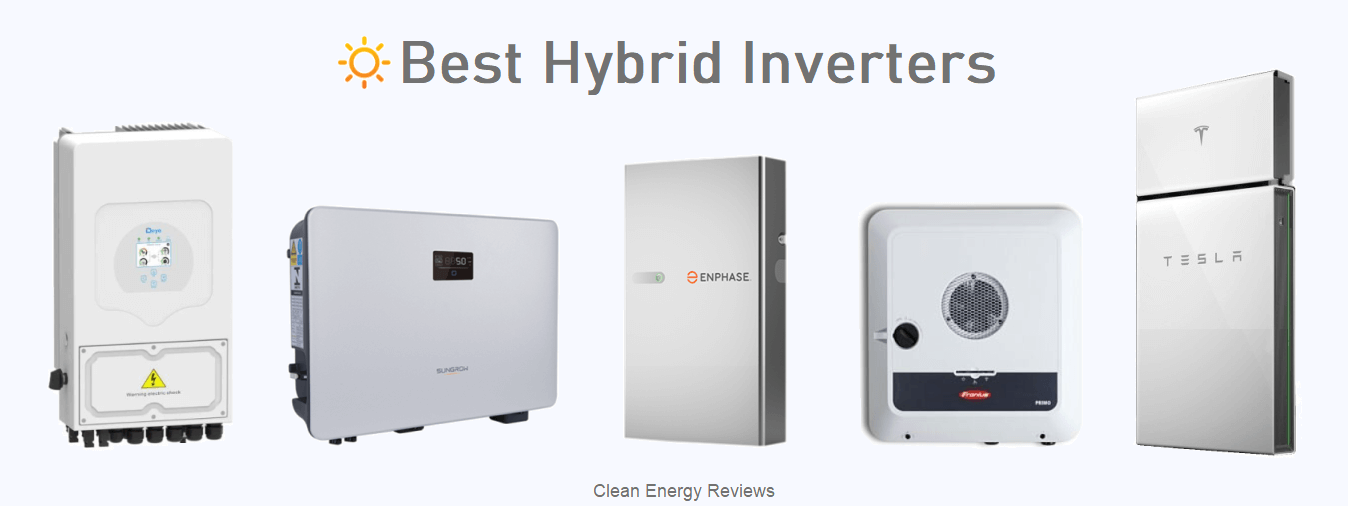Hybrid Inverter Comparison Chart - HV battery
Hybrid solar inverters are the primary piece of equipment used for home energy storage systems. These inverters are generally used to excess solar energy to increase self-consumption and provide backup power. Like solar inverters, hybrid inverters have integrated MPPTs for solar connection and grid-isolation (islanding) functions to enable backup power during a blackout. The following table lists the HV (High-voltage) hybrid inverters available worldwide. Also, see our selection of the Best hybrid inverters in 2024.
For 48V hybrid & off-grid inverters, see the 48V inverter comparison chart.
Hybrid inverters are the most popular way to add battery storage, but they have some limitations compared to dedicated off-grid inverters. For a detailed guide to selecting and sizing a hybrid inverter or energy storage system, see our Technical guide to designing hybrid and off-grid solar systems.
Hybrid Inverter Comparison Chart 2024 (HV)
Description of hybrid inverter features:
* Operating MPPT voltage range - Most manufacturers specify the full operating MPPT voltage range, while others provide the optimal MPPT voltage range for maximum power and efficiency. Outside the optimal voltage range, the inverter will still generate power but at a reduced capacity. Refer to manufacturers’ datasheets for full details.
** Surge Power - The maximum surge power rating and duration depends on the load type (resistive or inductive) and ambient temperature. Higher temperatures above 40degC will generally result in a reduced surge power rating.
DC Optimisers = Panel-mounted optimisers provide individual panel power optimisation and monitoring.
Note that battery storage can be added to an existing solar installation using an AC-coupled hybrid inverter like the Sunny Boy Storage from SMA. Another option to retrofit batteries to an existing system is using an AC battery such as the Tesla Powerwall or Sonnen ECO.
These charts are to be used as a guide only - Information may be inaccurate or outdated. Always refer to manufacturers’ specifications and datasheets. All installations must be performed by a certified solar installer or experienced licensed electrical contractor.




Detailed guide to the many specifications to consider when designing an off-grid solar system or complete hybrid energy storage system. Plus, a guide to the best grid-interactive and off-grid inverters and hybrid solar inverters for residential and commercial energy storage.